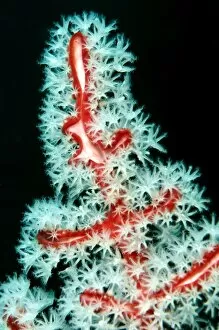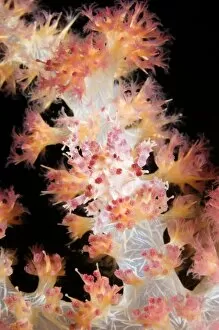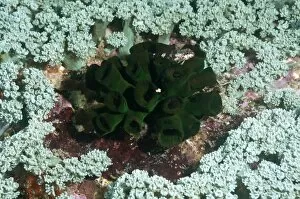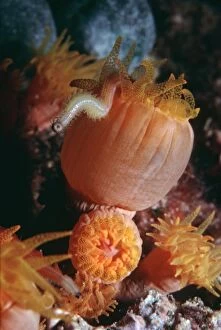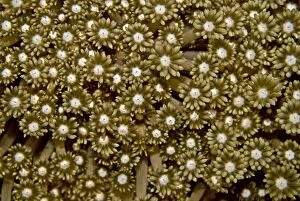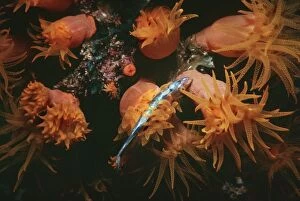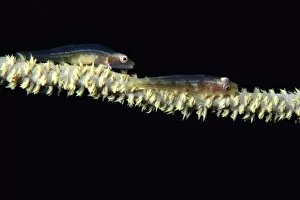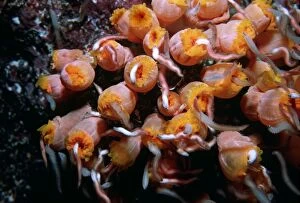Polyps Collection (page 6)
"Discovering the Enigmatic World of Polyps: A Fascinating Glimpse into Coral's Carnivorous Nature" Delve into the mesmerizing realm of polyps, as captured in Picture No
All Professionally Made to Order for Quick Shipping
"Discovering the Enigmatic World of Polyps: A Fascinating Glimpse into Coral's Carnivorous Nature" Delve into the mesmerizing realm of polyps, as captured in Picture No. 11676238. Here, a coral polyp is seen at night, feasting on a polychaete worm, showcasing their carnivorous tendencies. These incredible creatures are not mere passive organisms; they actively hunt and consume other animals to sustain themselves. The Great Barrier Reef off Heron Island in Australia serves as an enchanting backdrop for these captivating scenes. In another snapshot, we witness a coral polyp engrossed in devouring a fish under the cover of darkness - an astonishing sight that highlights their predatory prowess. However, competition arises even among these seemingly stationary beings. Two determined polyps engage in a fierce battle over a small fish during the nocturnal hours on Heron Island's reef. This intense struggle showcases both the resourcefulness and tenacity exhibited by these tiny yet mighty organisms. Venturing beyond Australian waters, we encounter Gorgonian Seafan Coral (Gorgonacea) polyps opening up to feed amidst the South China Sea's depths. The vibrant colors and intricate textures of this multi-textured coral cluster serve as testament to nature's artistic brilliance. To further appreciate the diversity within this group, let us turn our attention to Ernst Haeckel's illustrations from "Kunstformen der Natur" (Art Forms in Nature). Plate 16 introduces us to Pegantha Narcomedusae - ethereal jellyfish-like creatures with delicate tentacles floating gracefully through water columns. Plate 9 unveils Maeandrina Hexacoralla - stunning hexagonal-shaped corals adorned with elaborate patterns reminiscent of ornate mazes or labyrinths. These illustrations remind us that while photographs capture moments frozen in time, art allows us to explore fantastical interpretations of nature's wonders.

